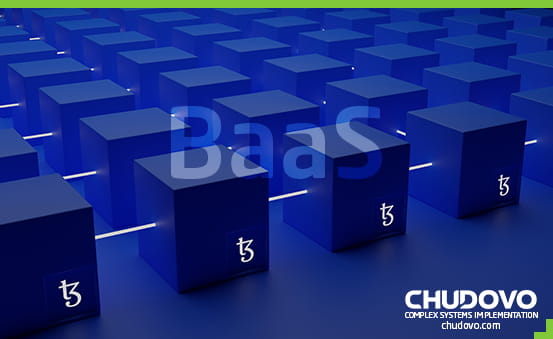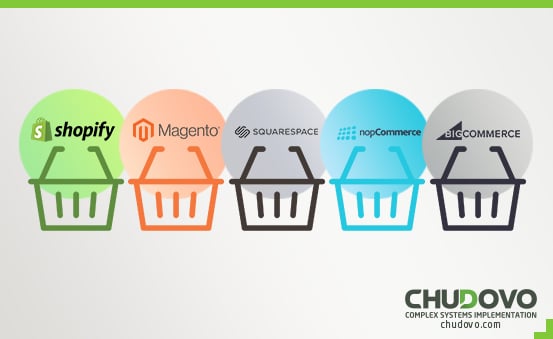Unlock Your Potential with a SaaS Application – Complete Guide in 2023
In the ever-changing world of business, the cloud computing platform is the only one that can keep up with the times. Software-as-a-Service (SaaS) platforms are one of the best ways to launch a business with the help of cloud data analytics. SaaS development & applications allow businesses to be more flexible and agile by connecting all employees at the same time. Let’s take a closer look at SaaS development!
Table of contents
- What Is a SaaS Application?
- Two Forms of SaaS
- Why is SaaS Application Important?
- Benefits of SaaS Application
- Differences Among IaaS, PaaS and SaaS Application
- SaaS vs Web Application
- SaaS Apps Security & Privacy
- How to Build a SaaS Product?
- When Do You Use SaaS?
- Challenges in SaaS Application Development
- SaaS Development Team Structure
- The Future of SaaS Development & SaaS Apps
- Cost of Building a SaaS Application
- Anything Else You Need to Know?
- Are You Ready to Use SaaS? Hire a SaaS Developer
- Conclusion
- FAQs

What Is a SaaS Application?
A SaaS application is a ready-to-use platform that is hosted by a vendor and made available to customers over the Internet. It is also known as on-demand, web-based software, or hosted software. For users, SaaS is simple. You can deploy the platform quickly and don’t have to make infrastructure decisions. In addition, the pricing is user-defined and can be adjusted dynamically at any time. Some characteristics of SaaS applications are:
- Hosted and managed by the provider.
- Accessible via the Internet.
- Paid for via a subscription.
- Upgrades are managed by the provider.
Two Forms of SaaS
SaaS apps come in two main forms. The ‘login type’ receives an ID and password and uses the service by accessing the homepage. On the other hand, the ‘API type’ provides a package installed in the public cloud in the form of an API and grafts it to the company’s server (ERP system).
The login type has the advantage of requiring no separate installation time, and anyone can quickly access the service. It is mainly used for SaaS for SMEs and general users. Examples of this login type include Google Apps, MS Office 365, Duzon, and Cloudfax.
The advantage of the API type is integration with a company’s ERP or CRM. Corporate members can use SaaS as if it were part of the ERP/CRM system in the first place. API type is not available to general users because you can’t use the service right away and interoperability with a particular system is absolutely essential. It is mainly used for SaaS for large and medium-sized companies that have their own development personnel. Examples of API-type SaaS include MS Dynamics 365 and IBM Watson.
Why is SaaS Application Important?
Software as a service is born from the need to create solutions for companies that lack the infrastructure or resources to expand the reach of their servers or have one. That is why today, SaaS solutions are as broad as their importance:
- Cost reduction
With a SaaS service, you do not have to purchase an internal server, which is expensive. You don’t have to worry about machines and maintenance. When you have servers on your sites, you’ll need to provide them with a big space designed for large machines, and they’ll need to have dedicated air conditioning, which is also costly to install. You can save on all these costs with SaaS apps.
- Global reach
You can travel anywhere worldwide; still, you will have access to your software, applications and data. Additionally, they are usually cross-platform, meaning you can use your computer, laptop, tablet or mobile to use it. You can even have a SaaS app to access from your mobile phone without a browser.
- Time-saving
You can use the software from the moment you hire it and save time on the installation of heavy machines.
- Scalability
This is a service where you only pay for your consumption. If you use a small amount, then the fee will be reduced and escalated as your need for data transfer increases.
- Security and constant updating
Software patches, the security of your data and improvements in it are the service provider’s responsibility. This is a relief to be able to invest that time in other aspects of the company.
In short, SaaS applications provide significant benefits in terms of cost, scalability, access, IT efficiency, and risk mitigation. SaaS has become an essential tool for enabling business innovation and growth for most businesses today.

Benefits of SaaS Application
SaaS applications are important because they provide many benefits to businesses. Some major benefits are:
- Low upfront cost
SaaS applications do not require any large upfront investment in software licenses or infrastructure. You can get started quickly and scale as your usage grows. This makes it easy to try new software and onboard new users.
- Automatic updates
The SaaS provider automatically updates the software, patches security holes, and keeps the application up-to-date. You don’t have to maintain any on-premise infrastructure or install software updates.
- Scalability
It is easy to scale SaaS applications up or down as your needs change. You don’t have to invest in and manage expensive hardware to support software usage spikes. The SaaS provider manages scalability for you.
- Accessibility
SaaS applications are accessible from anywhere via the internet. Your employees can access the software and data from the office, at home, or on the road. All you need is a web browser and an internet connection.
- Predictable costs
SaaS is offered on a subscription model, so you pay a predictable monthly or annual fee based on the number of users or features. Compared to on-premise models, the costs are transparent and easier to budget for.
- Improved collaboration
SaaS applications often make it easy for multiple users to access, share and collaborate on data and documents. This enables improved collaboration across teams and locations.
- Integration
Many SaaS applications offer open APIs and integration with other SaaS tools. This makes it easy to share data between tools and streamline business processes across applications.
- Reduced IT costs
The vendor operates and manages all the hardware, software, security, and uptime with a SaaS application. Your IT team can shift focus from maintenance tasks to more strategic initiatives. Your IT infrastructure costs also decrease significantly.
These are some key benefits of the SaaS application. Next we’ll be discussing IaaS vs PaaS vs SaaS models. Let’s jump into it!
Differences Among IaaS, PaaS and SaaS Application
SaaS is the most popular cloud consumption model, along with IaaS and PaaS. Simply put, IaaS provides elements for consuming cloud services, such as computing, storage, networking, and monitoring, and PaaS assembles these elements into a software development platform that can be consumed more easily.
One of the main differences between SaaS and traditional software is that SaaS isn’t primarily focused on software development. Instead, most popular business applications like email, customer relationship management (CRM) and financial management (FM) tools are delivered anywhere, anytime, via web browsers, desktops and mobile devices.
The main differences among the cloud service models are:
- Infrastructure as a service (IaaS) provides basic infrastructure such as servers, storage and networking. For example, AWS and Google Cloud provide basic infrastructure.
- Platform as a service (PaaS) provides infrastructure and development tools but the user creates the software. For example, Windows Azure provides infrastructure for Windows.
- Software as a service (SaaS) provides complete software applications hosted and managed by a service provider. For example, Salesforce, Dropbox and G Suite
SaaS vs Web Application
SaaS and web applications are both delivered over the Internet, but there are some key differences:
SaaS stands for Software as a Service. It refers to a software delivery model where a complete software application is hosted and managed by the service provider. Users access the application via the web or API. Examples of SaaS include Salesforce, Office 365, G Suite, etc.
A web application is any application that runs in a web browser. It can range from a simple single-page app to a large-scale SaaS application. Some web apps are self-hosted, while others are delivered as SaaS. So all SaaS applications are web apps, but not all web apps qualify as SaaS.
Some other differences:
- SaaS applications are designed to be multi-tenant, so a single instance serves multiple customers. Web apps can be single-tenant or multi-tenant.
- SaaS apps are maintained and upgraded by the provider. Web apps can be hosted and maintained by either the customer or a third-party.
- SaaS applications typically provide integration capabilities, user management, and other enterprise features. A basic web app may lack advanced features.
- SaaS pricing is typically subscription-based, often charging per user. Web apps can have a variety of pricing models.
- The provider manages the lifecycle of a SaaS app, and customers rely on the provider’s roadmap. The customer maintains more control over the application lifecycle and roadmap for web apps.
- SaaS applications offer limited customizability as they are designed to serve multiple tenants. Web apps can often be highly customized if self-hosted.
In short, all SaaS applications are web-based, but SaaS refers to a specific software delivery model with distinct characteristics around architecture, pricing, features, and management. SaaS is a turnkey solution, while a generic web app provides more flexibility and control.
SaaS Apps Security & Privacy
Some things to consider regarding SaaS security and privacy:
- Customer data is stored by the SaaS provider, so check their data security and privacy policies.
- For sensitive data, see if the provider offers encryption and other data protection methods.
- Check what data the provider collects for analytics and marketing, and if customers can opt-out.
- See if customers retain ownership and control of their data. Can data be exported if needed?
- Check if the provider follows data privacy laws like GDPR and HIPAA if applicable.
- Evaluate the provider’s data backup, failover, and disaster recovery plans.
- Consider using Single Sign-On (SSO) to reduce security risks.
- Educate employees about data security best practices.
How to Build a SaaS Product?
To create a SaaS application, the steps to follow must be well planned: well define the design, the app’s architecture or the services we are going to provide, but we must also take other factors into account.
Concept Phase
An important element is the pricing strategy. For example, within SaaS software, offering some utilities for free is common to attract users so that they can try our app and then monetize the rest of the more advanced features.
It will also be crucial to conduct a market study and our competition to validate the idea and determine if users are willing to subscribe to our SaaS services.
The SaaS development process is also part of this initial decision-making, such as what tools or platforms should be used and what features should be available. For instance, using role-based access, you can set different permissions within your team, in the analytics dashboard, on single sign-on, or in the audit log.
This whole process can be overwhelming, so we recommend starting little by little, especially when it comes to complexity which is financial investment.
Select the Right (External) Services
Once we are clear about what the app will be like, it is time to look for the appropriate external service providers.
One essential factor will be choosing a reliable cloud service provider that can contain our SaaS platform. Ideally, select a host that is inexpensive but capable of scaling as the platform grows. For example, Amazon Web Services (AWS) is a popular provider with multiple tools for SaaS developers.
You will also need various tools to develop customer-facing components like HTML + CSS or JavaScript frameworks (Angular, React, Vue.js).
There are also some programming languages with their corresponding frameworks: JavaScript (Node.js), PHP (Laravel) or Ruby (Ruby on Rails).
A database for back-end data storage is inevitable in building a SaaS product. The main databases are MySQL and PostgreSQL.
And finally, you will need to select a server for your application, such as Nginx or Apache.
Ensure Sufficient Security
SaaS applications move a large amount of sensitive data, so having users’ trust is essential. Security should be at the heart of any SaaS platform.
To protect user data, two-factor authentication and role-based access should be offered.
The SaaS application development company must provide encryption at the field level and encrypt, for example, social security numbers or credit card numbers.
Introducing a strict data deletion policy that clearly specifies how to delete and store customer data is also advisable.
Maintenance & Updates
One of the main advantages of SaaS platforms is constant updates, feature integration, and support. All these features are great, but they need to be constantly updated. That’s why a company that subcontracted will be able to provide logistical support and consultancy to meet the commercial requirements of the platform and of our idea.

When Do You Use SaaS?
Do you use email often or work from the web browser for certain applications? If so, you use a type of SaaS on a day-to-day basis without realizing it.
It is not necessary to download an additional application to use it. Only with the browser, you can access all your information and tools.
SaaS for small businesses
For small companies, SaaS services in the cloud have changed how they work, allowing them access to technology that was unimaginable in another time due to how expensive it is to maintain their own server.
Also, now that mobile devices have expanded the way we communicate in the last decade, where can a small company host its application to coordinate and manage services? Well, on an external server, in a SaaS service.
SaaS for large companies
The emergence of software as a service (SaaS) for large enterprises has made it easier to expand the number of companies that can quickly position themselves and revolutionize the industry in the market niche they serve or the need they fulfill.
Today Netflix, a storage platform for audiovisual material, has boomed. But why is it so popular? Because the service is fast, thanks to the software and infrastructure-as-a-service they use to keep that data flow stable and fast even with below-average internet connections.
Challenges in SaaS Application Development
When it comes to SaaS app development, there are a few things that can go wrong. What are these challenges?
- Selecting the Right Technology Stack
There are a lot of SaaS platform, SaaS language, and SaaS framework options. Choosing the right SaaS technology stack that is flexible and future-ready can be difficult.
- Designing for scalability
SaaS applications need to handle a large and growing number of users and data. Architecting the software for scalability is difficult.
- Data security
Ensuring customer data privacy, security, and regulatory compliance is a significant challenge.
- Deployment and DevOps
Automating builds, tests, and deployments across environments requires specialized expertise.
- User experience
Developing an intuitive and engaging user experience that serves the needs of many customers is hard.
- Integration
Enabling the SaaS app to integrate with other platforms and services is complicated.
- Pricing
Developing a pricing model that will be profitable yet also affordable for customers is tricky.
- Internationalization
Modifying the software to support multiple languages and regions is an ongoing challenge.
- Billing
Developing and maintaining a billing system that can handle subscription plans, metrics, customer behavior, and more is difficult.
Consequently, those are some of the biggest challenges commonly faced in developing and maintaining SaaS applications. How the development team addresses these challenges will determine the success and competitiveness of the SaaS product.
SaaS Development Team Structure
When it comes to building a SaaS product, having the right development team structure is crucial.
According to research from McKinsey & Company, companies that have effective team structures are 1.9 times more likely to have above-average financial performance compared to their peers.
One common approach is the Agile methodology which emphasizes collaboration and flexibility between cross-functional teams. This means having individuals with various skill sets, such as developers, designers, QA testers, and project managers, working together in small groups called “squads”. These squads then report to larger units known as “tribes”, which oversee multiple squads within a specific area of focus. By breaking down teams into smaller groups and encouraging open communication among members, progress can be made quickly and efficiently while minimizing errors or miscommunications along the way.
Furthermore, it’s important for each team member to understand their role within this structure for everything to function smoothly. For example, developers will work on coding tasks while designers will focus on user interface design elements that enhance user experience (UX). Quality assurance testers will ensure all features function correctly before they’re released while project managers provide oversight and coordination throughout the process.
In short, implementing an effective SaaS development team structure is key when creating a successful SaaS product. Utilizing methodologies like Agile can help foster better teamwork by breaking down silos between departments and improving communication channels between employees with different skill sets – ultimately leading towards higher quality output at faster speeds than traditional methods would allow for otherwise!
The Future of SaaS Development & SaaS Apps
One thing is for sure; SaaS services are displacing on-premise servers, more and more companies are using it, especially small ones and those that are starting their steps in business life. What is projected in the near future for this service model?
AI: Artificial intelligence is constantly advancing and evolving by leaps and bounds. It adapts to any type of code and learns from user behavior to design improvements in applications or software.
Autonomous management: Autonomous operating systems are projected, capable of evolving on their own and increasingly depending less on human intervention. In terms of calculation and speed of data processing, AIs are getting bigger every day thanks to hardware improvements.
Overall, SaaS development is going to thrive in the future.
Cost of Building a SaaS Application
The cost of building a SaaS application can vary significantly depending on the complexity and features of the application. Some factors that determine the cost include:
- Scope of the application
The number of features, integrations, and use cases the application supports. A basic app with a few core features will cost less than an enterprise platform.
- Tech stac
The technologies used to build the application influence cost. For example, open-source stacks like LAMP (Linux, Apache, MySQL, PHP) or MEAN (MongoDB, Express, Angular, Node.js) are more affordable than proprietary stacks.
- Integration
The number of 3rd party systems the app needs to integrate with impacts complexity and cost. For example, integrating with payment gateways, CRMs, ERPs, etc.
- UX and UI
The quality of the user experience and interface design affects cost. Simple UIs with standard components cost less than highly polished, customized interfaces.
- Scalability
The ability to scale vertically (more powerful servers) and horizontally (more servers) to handle usage spikes and growth adds to the cost. Auto-scaling features also increase complexity.
- Security
Advanced security features like single sign-on, two-factor authentication, encryption at rest, etc., increase the development cost. Simple authentication and HTTPS may be sufficient for some apps.
- Hosting
The choice of hosting infrastructure — whether multi-tenant, single-tenant, public cloud, private cloud or hybrid—determines ongoing operating and maintenance costs. More advanced hosting solutions cost more.
- Team size and location
The experience and geographical location of the development team significantly influence costs. For instance, a 5-person dedicated team in Eastern Europe and Central Europe might charge $10k-$30k for the first version, while a 25-person team in Silicon Valley could charge $1m-$3m for the same app.
As you can see from the chart above, SaaS development costs can range from $10K to $100K for a bare-bones first release and $2M to $5M to more for enterprise SaaS platforms with sophisticated features. The key is to start small and scale incrementally based on customer feedback.
Anything Else You Need to Know?
Infrastructure, platform and software are the three pillars of cloud computing; however, as technology has advanced, more uses for the cloud have emerged. It means there are many other “as-a-service” models. And it is likely that more will continue to come… (maybe?). On the plus side, there are so many types of services that the IT community have started using the umbrella term XaaS, meaning anything as a service. Let’s have a look at some of the more common add-on models you may encounter:
DbaaS (database as a service)
DbaaS is a type of database that’s hosted on a server provided by a provider. It stores and allows you to access structured data. The main advantages of using DbaaS are that it’s super easy to access, secure, and has minimum data loss chances. Plus, you don’t need to use your own servers to store all your data.
FaaS (Functions as a Service)
FaaS is a simplified form of Platform as a Service (PaaS). It’s called serverless architecture because it uses trigger events to run functions. It’s also auto-scaleable.
AaaS (Analytics as a Service)
Also known as Insights as a Service, AaaS is any platform delivered over the web that provides analytics capabilities, including big data visualization and management. AaaS platforms give companies access to tools like machine learning and artificial intelligence on demand, so they can enjoy cutting-edge analytics technology and avoid the heavy lifting of developing these tools.
SECaaS (Security as a Service)
As the use of cloud technology increases, security becomes an ever more pressing concern, and cyber criminals attack organizations large and small every day. Security as a Service enables companies that do not have the resources to run the necessary security processes in-house to use enterprise-grade protocols by outsourcing their security management and monitoring.
VaaS (virtualization as a service)
Virtualization is a key component of modern cloud computing. VaaS offers isolated virtual machines (VMs) hosted by the provider that can be customized to meet customers’ needs.
Not sure what exactly a virtual machine is? A virtual machine is a computer file, sometimes called an image, that acts like a real computer. Virtual machines typically run in a window like traditional computer programs.
Are You Ready to Use SaaS? Hire a SaaS Developer
Hiring a SaaS development team can be a great solution if you want to build a SaaS application but lack the internal resources or technical expertise. NYGGS is a software development company that provides SaaS application development services to clients worldwide.

Certified engineers
Convenient rates
Fast start
Profitable conditions
Agreement with
EU company
English and German
speaking engineers
We at Chudovo have experience designing, developing and deploying innovative SaaS platforms of any scale and complexity. Our team includes technical architects, SaaS consultants, UI/UX designers, and dedicated SaaS developers with years of experience building SaaS applications.
Benefits of partnering with Chudovo for your SaaS project include:
- SaaS Expertise
Our team has specialized knowledge of SaaS development tools, languages, and best practices. We stay up-to-date with the latest trends in SaaS.
- Design Focus
We emphasize a great user experience that will keep your customers happy and engaged.
- Security
We incorporate the latest security standards and tools to ensure your customer’s data is private and protected.
- Affordability
We provide high-quality SaaS development services at competitive rates.
- Customer Support
We offer ongoing technical support and consulting services to help your SaaS business succeed long-term.
- Flexibility
We work with a variety of engagement models including full-time, part-time or project-based hiring. We welcome long-term partnerships.
Partner with Chudovo, an experienced SaaS development company, to build a successful SaaS product. We look forward to transforming your idea into a robust software-as-a-service solution.
Conclusion
SaaS technology is a direct response to the increasing need for digitization. It is a modern, technological, intuitive, and integrated solution for common obstacles, such as the rental of resources and physical spaces and lack of reach to an increasingly dominant audience – virtual users.
Did you like this content on SaaS development? We’re sure it’s yes! Anyway, if you have any queries, please drop a comment.
FAQs
What is SaaS development?
SaaS (Software as a Service) development is the process of creating software applications that are designed to be hosted and used over the internet as a service.
How does SaaS development differ from other types of software development?
SaaS development focuses on creating applications for users to access over the internet without needing to install the software locally on their own systems. Other software development types typically involve creating software to be installed on the end user’s computer.
What are the benefits of SaaS development?
With SaaS development, users can quickly and easily access the application with minimal setup and no installation required. Additionally, SaaS applications can be updated quickly and easily and can often be used across multiple devices.
What are the disadvantages of SaaS development?
One of the disadvantages of SaaS development is that the user is dependent on the internet to access the application. SaaS applications are also easy to update and often work across multiple devices.
What types of applications can be developed using SaaS?
SaaS development can be used to create various applications, such as customer relationship management software, data visualization software, content management systems, and more.
If you need highly qualified SaaS web developers at the right price for your project, contact us now!




